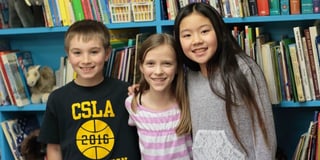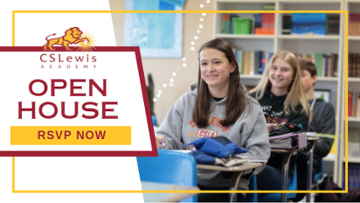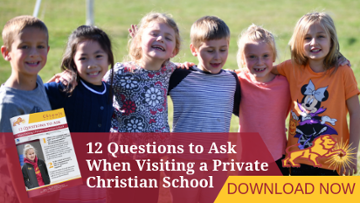When I first experienced a blended, or multi-grade classroom, my child was a 3rd grader placed in a 2nd/3rd blend. I think I had a pretty typical parent reaction…. I panicked and my thoughts went  straight to, “How is one teacher going to teach two grades?! My child is only going to get half an education!! Other students will slow his learning or speed through and leave him behind - how will this ever work?!”
straight to, “How is one teacher going to teach two grades?! My child is only going to get half an education!! Other students will slow his learning or speed through and leave him behind - how will this ever work?!”
Straight to Google I went, and searched endlessly to find the detriment about to hit my 8 year old. Let me just say, I did not find one drawback to multi-age classrooms. Once I moved past the panic mode, here is what I experienced, which actually was exactly what my research told me I’d experience…
- There is no difference in academic achievement between children in blends versus single grades. In my research, I have read this time and time again, and now that my once-8-year-old is 15, I have experienced blended classrooms with three of my four children, each in different grades. I completely agree with this statement. When you think of a typical 3rd grade classroom, abilities can range from 2nd to 4th grade levels, and sometimes stretch even further; this isn’t much different than a 2nd/3rd Teachers do what they do and get creative to meet each student’s needs.
- Reading can be taught in small groups. This is no different than a typical single grade classroom. The fluidity of two grades means teachers can more easily teach each student at his or her level. This can work with math also. Students get an explanation, get started on an assignment, and a small group is pulled aside for extra instruction.
- They have the same assignments. In my kids’ classrooms, this always seems to work well. All students could have a writing assignment, but if needed, one group could have different expectations, for example, length of writing or number of sources used, etc. This gives teachers the opportunity to individualize expectations by ability, not grade level.
- Social benefits are shared between students on both the older and younger side. Older students have more opportunity to be leaders and nurture younger students, and younger students have role models and experience guided collaboration. This environment organically encourages both mentoring and cooperation. These settings also broaden the social peer group for children, offering a wider possibility of friendship choices.
- It doesn’t always make sense to separate students into groups by their birthdate. When compared to sports, typically, a range of ages participate together. This, often times, allows participants to play up or down, based on skill level. This is the same basic concept, but inside the walls of one classroom.
In my years of parenting, I have experienced a 1/2 blend, 2/3 blend, 3/4 blend, 6/7 blend, and middle school or high school mash-ups (yes, I made that name up!). This fall will be our first 4/5 blend. As a comparison, I have also experienced single grade classrooms for every grade up as far as my oldest child, who will be a sophomore this fall. With good teachers in the classroom, I have seen nothing but positive experiences and outcomes for each of my children. Any more, I celebrate blends, especially if it means being blessed to have the same teacher who knows my child so well for another year, which is exactly the case for my 2nd grader in a 1/2 blend this fall.
Click the banner below to learn more about our upcoming Open House on Sept. 17, 2019.
.png?width=209&name=CSLA%20Logo%20Alt%20(1).png)

